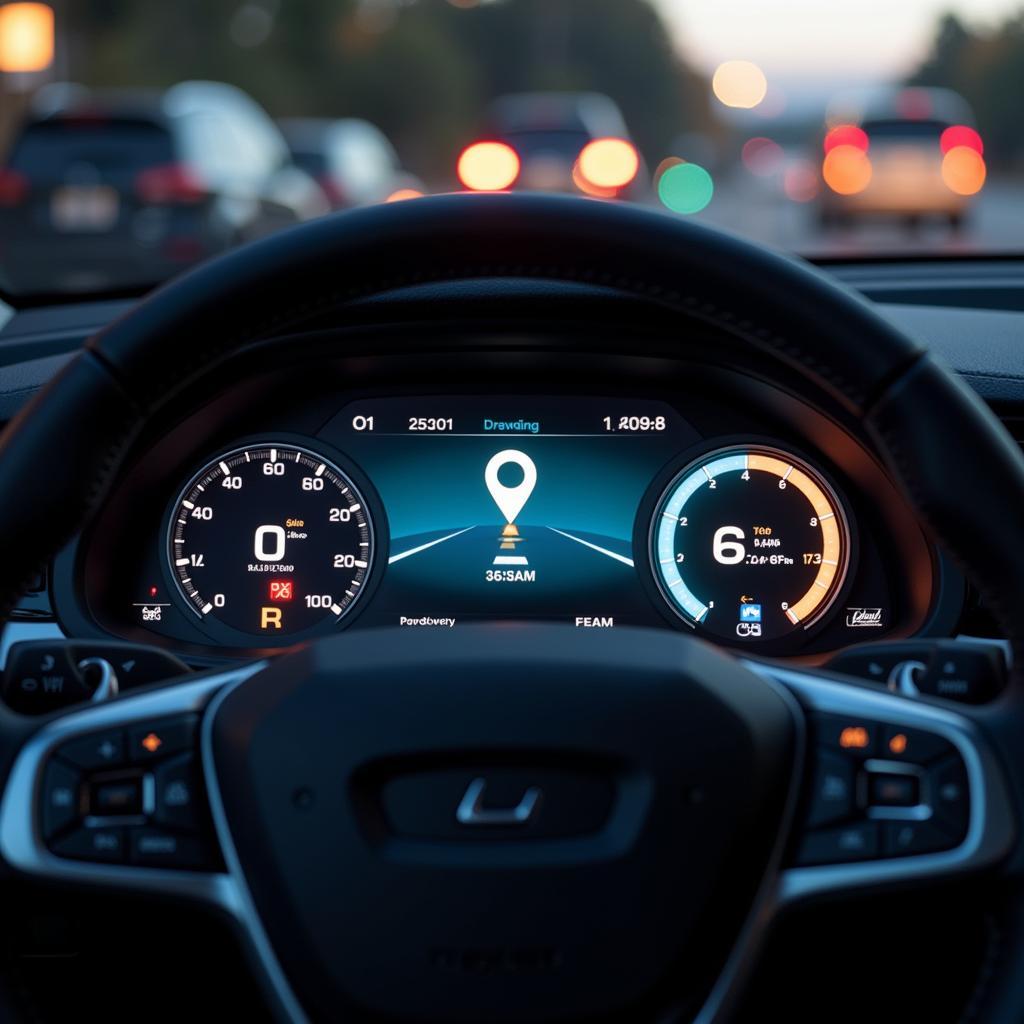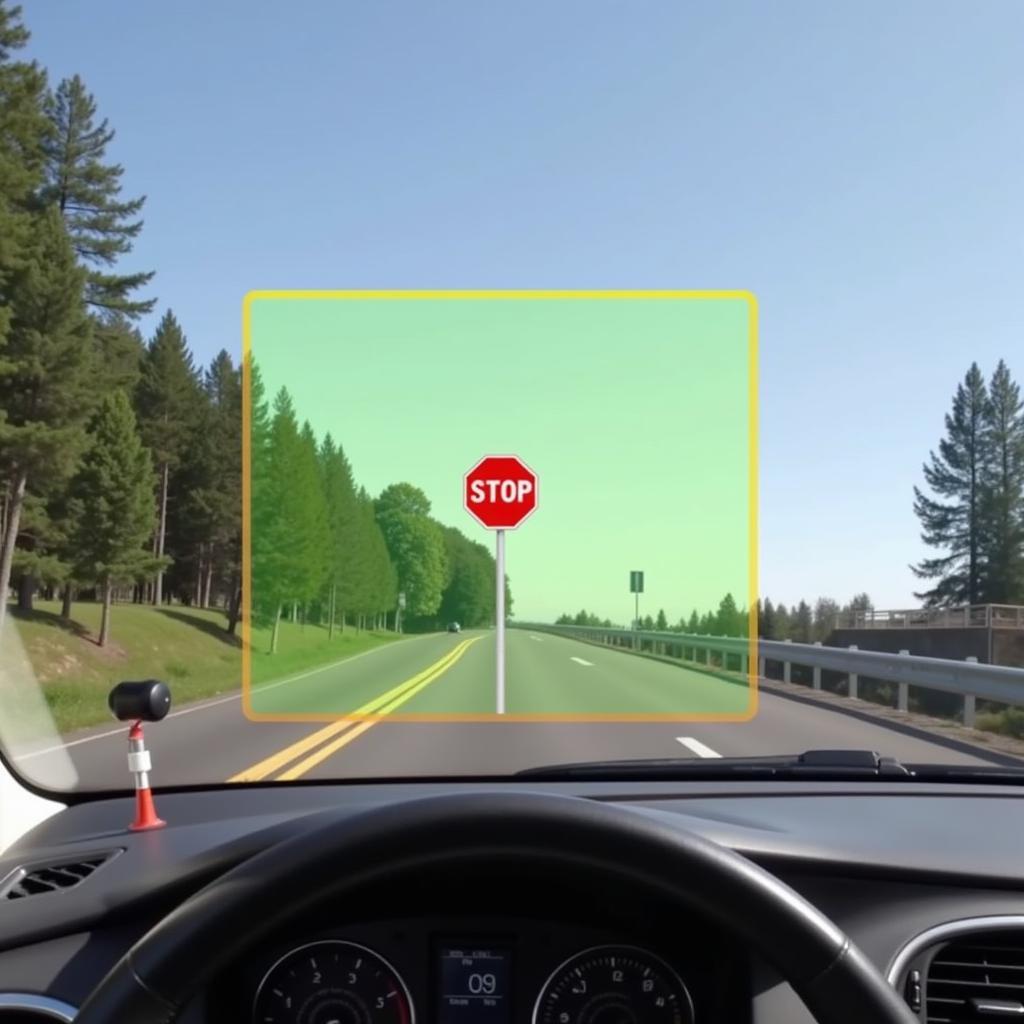Full-color active driving displays with traffic sign recognition are rapidly changing the landscape of automotive safety and driver assistance. But what exactly are they, and how are they revolutionizing the driving experience? This comprehensive guide will delve into the intricacies of this cutting-edge technology, exploring its benefits, features, and potential impact on the future of driving.
 Active Driving Display with Traffic Sign Recognition
Active Driving Display with Traffic Sign Recognition
Beyond Traditional Dashboards: The Rise of Active Driving Displays
For decades, drivers relied on traditional dashboards with analog gauges and basic warning lights. Today, we’re witnessing a shift towards intelligent, digitalized systems. Active driving displays, strategically positioned within the driver’s primary field of vision, present real-time information in an easily digestible format. This proactive approach to information delivery empowers drivers to make informed decisions, enhancing safety and driving efficiency.
Traffic Sign Recognition: Adding an Extra Layer of Awareness
Imagine effortlessly navigating unfamiliar roads, never missing a speed limit sign or road hazard warning again. That’s the promise of traffic sign recognition systems. These intelligent systems employ advanced cameras and image processing algorithms to identify and interpret road signs. This information is then relayed directly to the active driving display, providing drivers with timely reminders and alerts.
 Traffic Sign Recognition in Action
Traffic Sign Recognition in Action
The Benefits of a Full-Color Active Driving Display with Traffic Sign Recognition
This powerful combination of technologies offers a compelling array of benefits for drivers:
- Enhanced Safety: By providing timely warnings about speed limits, road hazards, and potential dangers, active driving displays with traffic sign recognition contribute to a safer driving environment.
- Reduced Cognitive Load: With crucial information readily available at a glance, drivers can stay focused on the road, minimizing distractions and reducing mental fatigue.
- Improved Navigation: Integrating navigation instructions seamlessly within the driver’s field of vision enhances situational awareness and simplifies route following.
- Increased Confidence: Real-time information and alerts empower drivers to make informed decisions, fostering a sense of confidence and control behind the wheel.
Key Features of Advanced Systems
While core functionalities remain consistent, advanced active driving display systems boast a range of features:
- Adaptive Cruise Control Integration: Displaying the status and set speed of adaptive cruise control, promoting a clear understanding of the system’s operation.
- Lane Departure Warning Visualization: Providing visual cues and warnings when the vehicle deviates from its lane, encouraging lane discipline.
- Blind Spot Monitoring Alerts: Displaying alerts when vehicles are detected in blind spots, aiding safe lane changes and merging maneuvers.
- Night Vision Augmentation: Enhancing visibility in low-light conditions by displaying thermal images of pedestrians and obstacles.
How Does Traffic Sign Recognition Work?
Traffic sign recognition systems utilize a combination of hardware and software components:
- High-Resolution Camera: Typically mounted behind the windshield, a high-resolution camera captures images of the road ahead.
- Image Processing Unit: The image data is processed by a dedicated unit, employing sophisticated algorithms to identify potential traffic signs.
- Sign Recognition Algorithms: These algorithms analyze the shape, color, and patterns within the captured images to classify and interpret road signs accurately.
- Data Verification: The system cross-references detected signs with onboard navigation data or real-time traffic information to ensure accuracy.
- Information Display: Once verified, the recognized sign and relevant information are displayed on the active driving display, alerting the driver.
The Future of Driving: A Connected and Automated World
Full-color active driving displays with traffic sign recognition are stepping stones towards a future of increasingly connected and automated vehicles. As these technologies evolve, they are poised to play a pivotal role in:
- Vehicle-to-Everything (V2X) Communication: By receiving and displaying real-time data from other vehicles and infrastructure, these displays can enhance situational awareness and enable proactive safety measures.
- Automated Driving Features: Integrating seamlessly with advanced driver assistance systems (ADAS), paving the way for higher levels of vehicle automation.
Conclusion
The integration of full-color active driving displays with traffic sign recognition marks a significant leap forward in automotive safety and driver assistance. By providing drivers with timely, relevant, and easily digestible information, these systems empower safer, more informed, and ultimately, more enjoyable driving experiences. As we progress towards a future of increasingly intelligent and connected vehicles, these technologies are set to play a crucial role in shaping the landscape of mobility.

